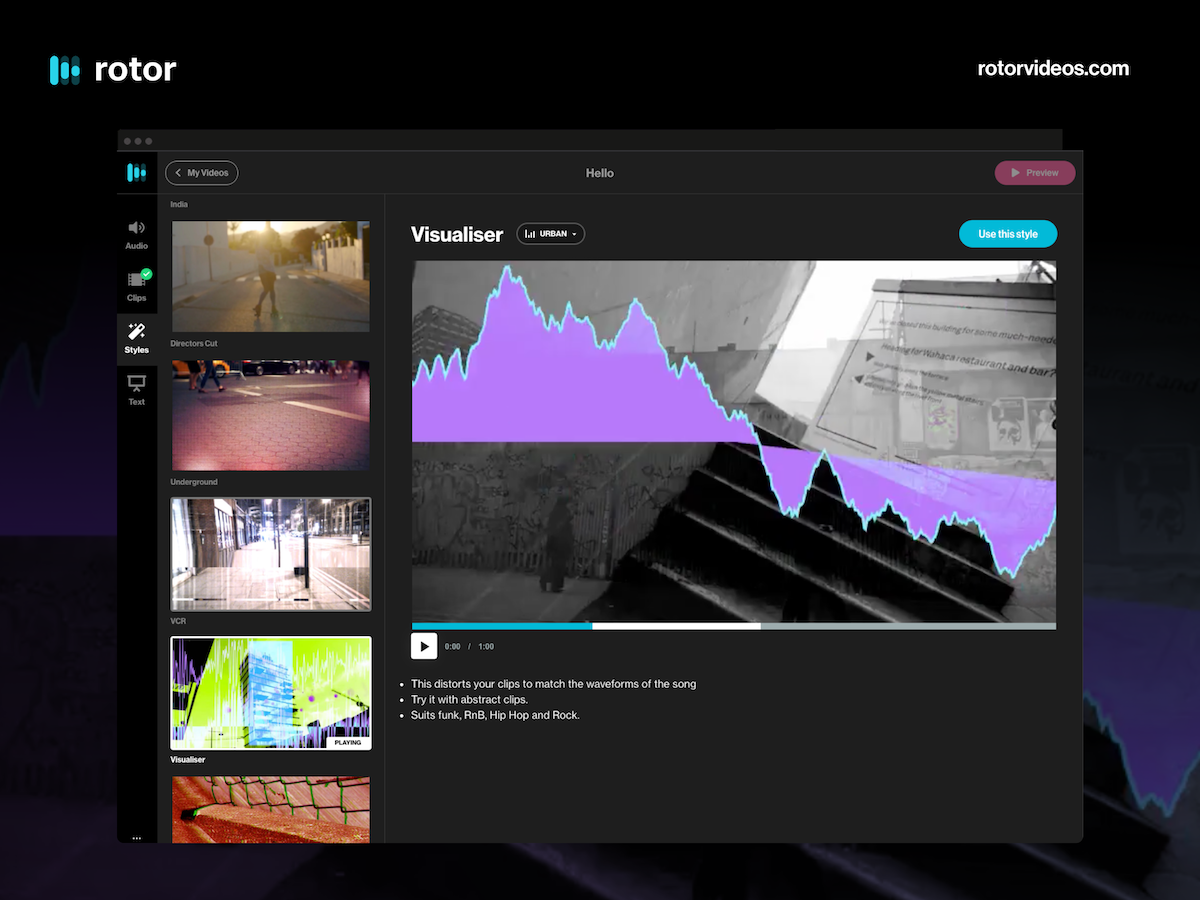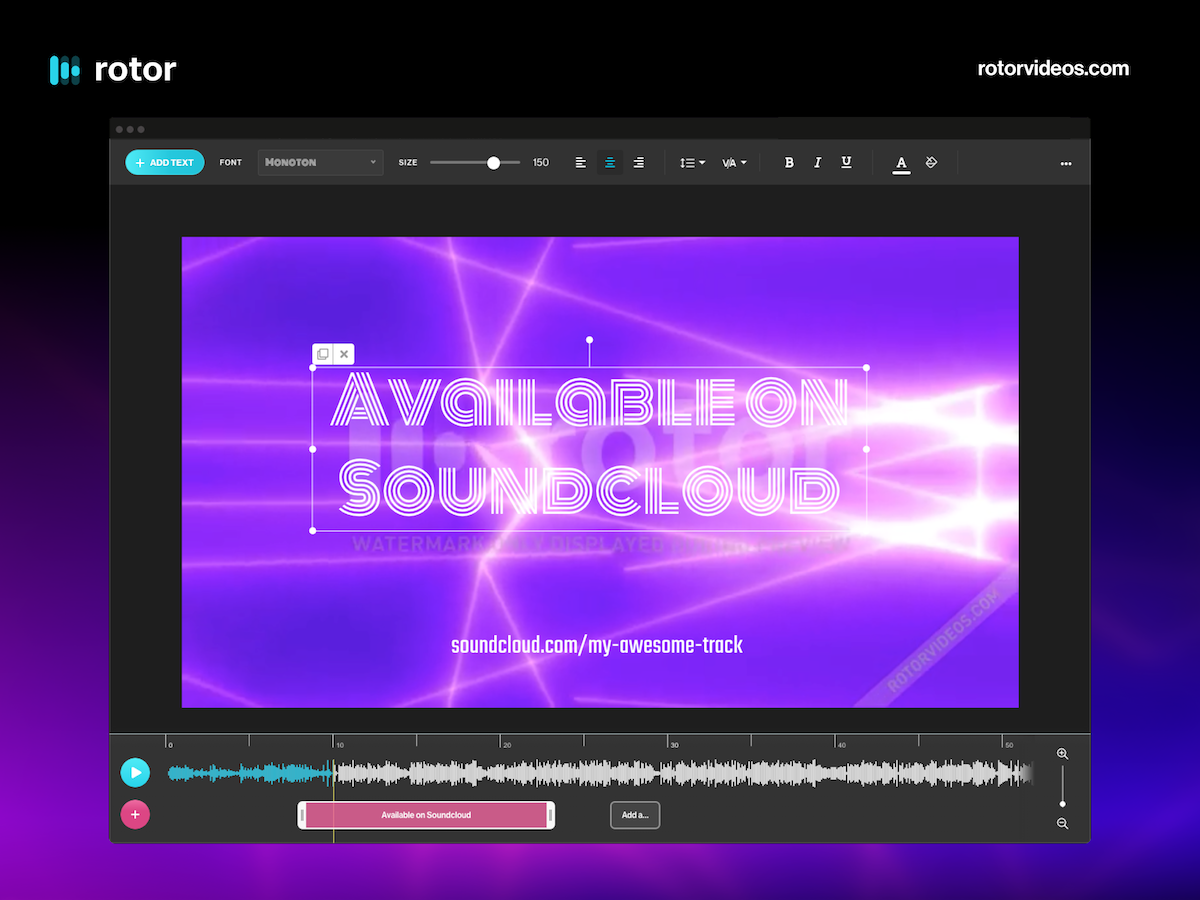
The traditional music video is dead (and that’s a good thing).
The rise of TikTok and Reels coincided with the demise of long-form music videos. And yet many artists still think they have to shoot professional, full-length videos. I usually advise against it. Why?
By TikTok standards, traditional music videos are boring and costly.
Most traditional music videos are:
- Too long. So only your most diehard fans watch till the end.
- Too scripted. So they don’t perform on social where viewers expect things to look raw & impromptu.
- Too polished. So your video sees like an ad (skip!)
- Too slow. So your sweeping intro and “dramatic” b-roll are all the more reason to skip.
- Too expensive. So you waste significant funds.
- Too time-consuming. So you waste precious time.
To emphasize: Traditional music videos usually don’t perform well on social platforms, particularly when you’re trying to reach and impress new audiences. They demand too much of the viewer, and they don’t feel like native content.
But because you’ve invested so much time and money creating your full-length video, there’s pressure for that one piece of content to blow up — even as it’s poised to disappoint.
Does this mean artists should NEVER make long videos?
Not exactly. But you should expect that if you shoot a traditional music video, it’ll only be of interest to a tiny percentage of your audience. If you’re still building your initial following, your time will be much better spent creating newer forms of video content.
This includes short-form videos for Reels, TikTok, Stories, Shorts, Snapchat, or Spotify Canvas — plus a mix of low-cost options such as lyrics videos, Art Tracks, behind-the-scenes content, teasers, and concert footage.
How to make good video content, quickly.
Speed matters.
It’s the age of short-form video. There’s no such thing as too much content.
The same tenants of YouTube success apply to short-form video — frequency, posting on a schedule, measuring engagement — but instead of you needing to make a big investment of time or money making a long video, all you really need now is 15 seconds, some interesting imagery, and a good song or message.
You don’t need t run on the daily hamster wheel of content creation. But you can’t disappear for weeks at a time either.
Artists need to be posting a steady flow of videos.
Why frequent video output matters:
- Important artist discovery & song virality happens on TikTok and Reels
- While those platforms’ algorithms are different, both reward creators who have a deep feed of content to scroll through, as it increases viewer watch-time
- Plus, the more good stuff you post, the better your chances of a viral video (and the better you’ll get at creating them)
- Fans have grown to expect that you promote your music through short videos; it’s how they want to hear from you
- Social video ads outperform other advertising almost every time
- Audiences expect to engage with you through live-streaming on Facebook, Instagram, or Twitch too
- And YouTube is still the absolute giant for visually representing your music and brand, and a great place to publish lyrics videos, interviews, etc.
Just think of how YOU respond to content online. When it comes to grabbing and keeping attention, video is king. That’s why you’re gonna need a LOT of it.
Again, If that sounds stressful, you might be thinking of music videos in the old-school way I described above. In 2022, “music videos” don’t have to look like expensive productions or be full-length songs, because:
- “Authentic” has replaced “perfect”
- Short has replaced long
- And instant social consumption has replaced video archiving
Thanks to a new partnership between CD Baby and Rotor, the automated video-creation tool for musicians, you’ll have a much easier time creating music videos, lyric videos, concert announcements, and other video teasers on a regular schedule.
How do you create good video content on a regular schedule without going broke or driving yourself crazy?
Let me repeat: not every video needs to be a “proper” music video.
Short-form video trends include skits, duets, dance trends, cover song clips, tutorials, relatable stories about your music, and much more. This can be candid stuff that takes mere minutes to shoot and post.
Creating short-form video is one of the best ways to:
- engage fans on a regular basis
- build awareness for your music/brand through repetition
- experiment with different ways to promote the same release, hook, concert, merch, etc.
In a social media world, sometimes the less-produced something looks, the more apt people are to watch it. The more real and immediate it feels, the better. Since most musicians aren’t professional videographers, that’s good news for us. It takes the pressure off having to make every video a polished masterpiece.
When it comes to longer videos, you can easily get mileage from:
- Lyric videos (which you can create very affordably by following THESE TIPS)
- Videos that use public domain or archival footage
- AI-generated music videos (more on this below)
- Live performance videos or in-studio sessions
- Art Tracks
- And “vlogs,” interviews, behind-the-scenes, and mini-documentaries
Repurpose longer video content
Post your longer music videos, live streams, or concert videos to YouTube, Facebook, and Instagram, then chop them into:
- Short Instagram posts
- Instagram Stories with overlaid text or lyrics
- 8-second looped video for Spotify’s Canvas feature
- TikTok clips
- Video show-posters
- Teasers for an upcoming release
- 15-second video ads
These short video elements give you new opportunities to grab listeners and further convey your brand/vibe.
Lean on automated video tools
Life is fast-paced, especially if you’re also cranking out songs, touring, or working a day-job. You don’t always want to make your own videos from scratch. That’s why CD Baby is excited to partner with Rotor to help you build an affordable music video. There’s no software or editing skills required.
To make a music video in minutes, here’s what you do:
1. Upload your song
2. Pick video clips from Rotor’s huge library, upload your own clips, or both


3. Choose from over 40 edit styles designed by professional directors and visual artists (you can view examples of each to figure out the best vibe for the song)


4. Let Rotor do its magic, analyzing your song and selected footage, and then intelligently editing your video together for you to suit your track’s rhythm, tempo and intensity
5. Add any text overlays you want


6. Preview the results


7. If you like what you see, download a pro-quality video cut to your music
The videos you make with Rotor are 100% yours. You can share them wherever you like, and Rotor claims no rights once you’ve paid for the video (and you can always preview the video before paying). Watch some examples created by Rotor customers.
As an example, I used Rotor to create a bunch of short teasers for my song “Paper Angels.” I posted one video per day leading up to the release. Here’s a reel compiling all those teasers:
CD Baby’s Kevin Breuner did something similar using Rotor, but for the purposes of testing different video ads. Check that story out here.
While Rotor is a great tool for creating bite-sized teasers, concert announcements, and more when you’re on-the-go, it’s just as useful for making full-length music videos. Here’s a video Rotor created a couple years ago when I first heard about the service:

